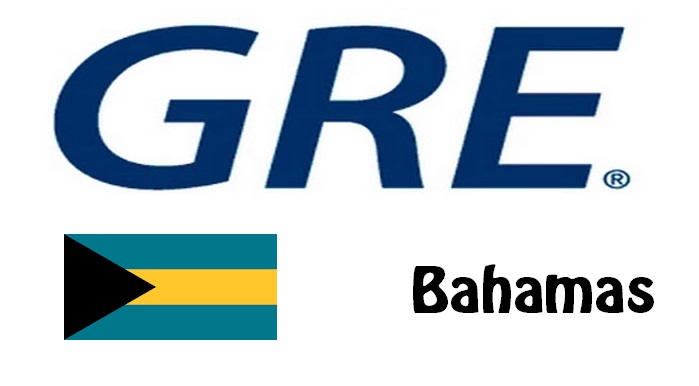GRE Testing Locations
Decided to take GRE exam? Now it is time to determine where to take the test. This site provides a full list of GRE testing centers in Bahamas, among which, you can choose one that is nearest to you. Good news is that the following GRE test locations in Bahamas offer both GRE general test and the GRE subject tests.

- The College of The Bahamas – STN13468A
Room 18 Bahamas Tourism Training Center, Thompson Blvd., Nassau
Bahamas
Computer Based Test
GRE Test Dates
There are two types of test format offered by the test maker – ETS: Computer-delivered and Paper-delivered GRE general tests. For computer based test format, the GRE General Test is offered year-round on a continuous basis, and available for registration on a first-come, first-served basis. For paper based general test, testing is available three times per year. The following test dates apply:
| Test Dates for Paper Based | Deadlines for Registration | Scores Available |
|---|---|---|
| November 09, 2019 | October 4, 2019 | December 20, 2019 |
| February 1, 2020 | December 27, 2019 | March 13, 2020 |
GRE Subject Tests in Bahamas
The GRE Subject Tests are available on paper based only. In all GRE test centers throughout the world (both inside and outside United States), the exam is available three times a year. The three test dates are:
- April
- September
- October

More about Bahamas
Business
76.8% of the economy of the Bahamas is based on the service sector (tourism, international financial center, especially for offshore markets). With a gross national income (GNI) of (2017) US $ 29,170 per resident, the archipelago is one of the more prosperous states in Latin America. Due to the extensive tax exemption (no income and corporation tax) and the advantageous banking laws, numerous companies, especially US banks, investment and trust companies, settled here. On financial services about 31% is the gross domestic product (GDP).
Foreign trade: imports have exceeded exports for years (import value 2015: 3.16 billion US $; export value: 442.8 million US $). The trade deficit is offset by tourism. The main imports are petroleum, food, machinery and chemicals; In addition to re-exports, export goods are primarily fish and seafood, rum and salt, petroleum products and cosmetics. The USA is by far the most important trading partner.
Agriculture
Agriculture only plays a subordinate role; including fisheries, it generates only 1.8% of GDP. Because of the low fertility of the soil, the cultivation of vegetables, bananas, citrus fruits, pineapples, papayas, mangoes, but also small-scale livestock farming is usually only carried out by small-scale family businesses that supply themselves or the local market. On Eleuthera et al. northern islands there are some modern vegetable and fruit plantations (export of tropical fruits) as well as dairy and poultry farms. Despite great efforts to increase the self-sufficiency of the islands, 80% of the food has to be imported.
Fisheries: To protect national fisheries, the government designated a fishing zone of 200 nm in 1977. In 2014 the catch was 11,900 t (mainly lobsters for export to the USA).
Tourism
The most important economic sector is tourism, which contributes around 50% to GDP and provides 20% of jobs. In 2014, 6.32 million guests visited the islands, the majority of them as cruise passengers. The islands of New Providence and Grand Bahama are particularly important holiday destinations; the government has recently tried to promote tourism on the other family islands.
Industry
The industrial center of the Bahamas is located in the industrial zone of Freeport (Grand Bahama) created in 1955. Capital-intensive companies have emerged there through foreign investments, such as an oil refinery (since 1970), a cement factory, pharmaceutical and electrical companies; there are also wood processing, canning factories and beverage manufacturers (rum, beer). A high-tech industrial park was also set up in the early 1990s. Smaller industrial operations can be found on New Providence. Sea salt is extracted on Grand Inagua and Long Island; the aragonite mining on Sandy Clay sank to insignificance in the early 1990s. Overall, manufacturing (including mining and construction) contributes 21.4% to GDP.
Transportation
The Bahamas has a well-developed road network (around 3,000 km in total) on New Providence, where 90% of the vehicles are registered, and the larger Family Islands. Deep sea ports are Nassau, Freeport and Matthew Town. Nassau and Freeport have international airports; the other islands have around 60 smaller airports and runways.
Great Abaco
Great Abaco [gre ɪ t æbəkə ʊ ], island of the Bahamas, 1681 km 2 (with addition islands), 13 200 residents; The main settlement is Marsh Harbor (about 4 700 residents; airfield, marina); south of it the 800 hectare Pelican Cays National Park in the coastal area.
Acklins Island
Acklins Iceland [ ækl ɪ nz a ɪ lənd, English], island in the group of Crooked Islands and administrative district of the Bahamas; 389 km 2, 560 residents; Fishing, agriculture.
Andros (Bahamas)
Andros, [ ændrəs], the largest island of the Bahamas, 5,957 km 2, 7 700 residents; The main settlement is Mangrove Cay; Andros is heavily forested.
